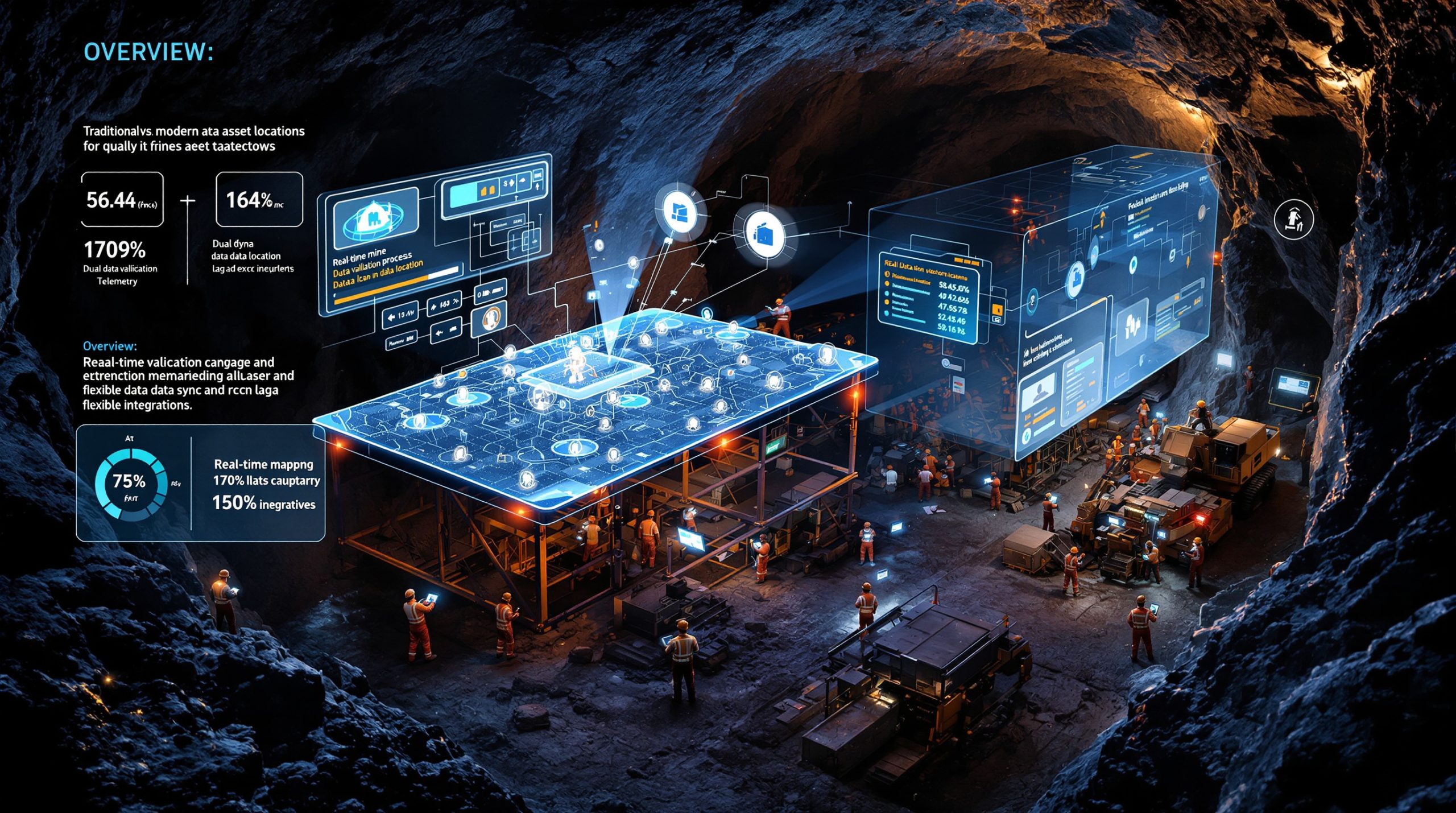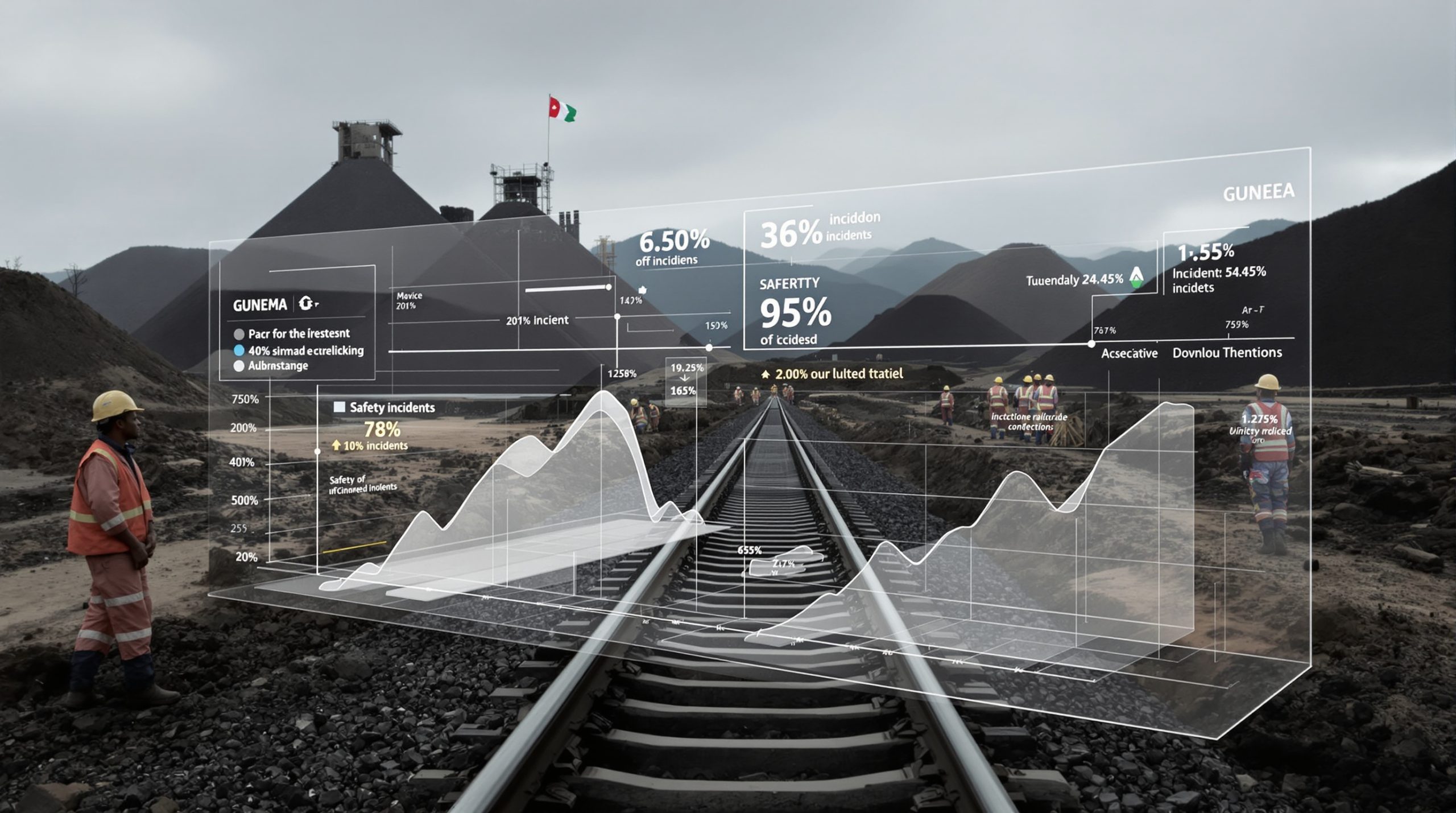How Does Cat's Dynamic Energy Transfer System Work?
The Core Technology Behind Dynamic Energy Transfer
The Cat Dynamic Energy Transfer (DET) system represents a groundbreaking approach to mining electrification. This innovative technology enables continuous power delivery to large mining trucks during operation, eliminating traditional limitations of battery-powered solutions. The system comprises three integrated components working in harmony to deliver electricity to moving vehicles.
The power transfer module serves as the system's foundation, converting electricity from the mine's power infrastructure to the appropriate voltage required for operation. This module can utilize various power sources, including grid electricity, on-site generators, or renewable energy solutions, providing flexibility for different mining operations.
The electrified rail infrastructure forms the second critical component – a specialized conductive rail system installed along haul roads that transmits electricity directly to trucks in motion. This rail network can be strategically placed on straight sections, curves, and importantly, on ramps and inclines where energy consumption typically peaks.
The vehicle connection system completes the technology triad, consisting of specialized transfer arms mounted on compatible trucks that maintain consistent contact with the electrified rails while moving. This connection enables seamless power transfer without requiring trucks to stop for charging or battery swapping.
Installation Requirements and Site Integration
One of the DET system's key advantages is its adaptability to existing mine infrastructures. The technology has been engineered to accommodate various operational layouts and conditions commonly found in mining environments.
The rail infrastructure can be installed on multiple terrain types, including straight road sections, curves of various radii, and steep ramps where trucks traditionally consume the most energy. This flexibility allows mine operators to target high-energy-consumption areas for maximum efficiency improvements.
The vehicle connection system features transfer arms that can be mounted on either side of compatible trucks, allowing for implementation flexibility based on site-specific requirements. The initial deployment at Codelco's Radomiro Tomic Division will utilize Cat 798 AC trucks, demonstrating the system's compatibility with existing fleet assets.
Integration with a mine's electrical infrastructure requires consideration of power distribution networks, but the system is designed to minimize disruption to ongoing operations during installation. This practical approach to implementation reflects Caterpillar's understanding of mining operations' continuous nature, where downtime must be carefully managed.
What Are the Environmental Benefits of Dynamic Energy Transfer?
Emissions Reduction Potential
The environmental impact of implementing the Cat DET system represents a significant advancement in mining's sustainability journey. According to Felipe Lagno, Codelco's Corporate Manager of Innovation and Technology, preliminary calculations indicate the potential for a 60-70% reduction in truck emissions when utilizing this technology.
This substantial reduction stems primarily from decreased reliance on diesel fuel during truck operations. Mining haul trucks traditionally consume enormous quantities of diesel, particularly when climbing grades loaded with material. By providing electric power during these energy-intensive operations, the DET system directly reduces the carbon footprint associated with fuel combustion.
Beyond carbon dioxide reduction, the system also contributes to improved local air quality at mine sites. Conventional diesel engines produce significant particulate matter and nitrogen oxides (NOx), which impact both environmental conditions and worker health. Electrification through the DET system helps mitigate these emissions, creating healthier working environments.
The system also minimizes engine idling and optimizes power utilization across operations. When trucks operate on electrified sections, engine load requirements decrease substantially, reducing emissions even when diesel systems remain engaged as backup power sources.
Energy Efficiency Improvements
The DET system delivers substantial energy efficiency advantages compared to conventional diesel-only operations. The direct electricity transfer to moving trucks eliminates several energy conversion inefficiencies inherent in purely combustion-based systems.
Traditional diesel trucks consume the most fuel when climbing grades loaded with material, precisely where the DET system provides maximum benefit. By supplying electric power during these high-energy phases, the system dramatically reduces fuel consumption where it matters most.
The technology potentially supports regenerative capabilities, allowing trucks to capture energy during downhill segments that would otherwise be lost as heat through braking systems. This regenerative aspect creates an energy recovery opportunity that further enhances overall efficiency.
Another significant advantage is power source flexibility. While conventional trucks rely exclusively on diesel fuel, the DET system can utilize electricity from various sources, including renewable energy installations. This flexibility allows mines to progressively transition toward cleaner energy sources while maintaining operational reliability.
Idle time energy consumption represents another efficiency improvement area. Conventional trucks continue consuming fuel while idling, whereas the DET system allows for reduced engine runtime during certain operational phases, eliminating this wasteful energy usage.
What Operational Advantages Does the System Offer?
Extended Equipment Lifespan
One of the most compelling operational benefits of implementing the Cat DET system is the potential extension of truck service life. Felipe Lagno from Codelco specifically highlights the opportunity to "extend the useful life of our trucks without compromising productivity" as a key advantage of the technology.
This lifespan extension occurs through several mechanisms. First, reduced engine hours and decreased wear on diesel components result from less reliance on combustion power. When trucks operate on electrified sections, engine load decreases substantially, directly translating to less mechanical wear on critical powertrain components.
The system also reduces thermal stress throughout the powertrain. Diesel engines generate significant heat during operation, particularly under heavy loads. By reducing the engine load requirements, the DET system minimizes thermal cycling and related stress on engine components, contributing to longer component life.
Maintenance requirements for combustion-related systems naturally decrease as these systems see reduced usage. Components like fuel injectors, piston rings, and exhaust systems experience less operational stress and contamination, potentially extending service intervals and reducing overall maintenance costs.
The more consistent power delivery provided by the electrification system reduces mechanical strain on driveline components. Traditional diesel power delivery can produce torque fluctuations and power surges, whereas electric power offers smoother acceleration and operation, reducing stress on transmission and final drive components.
Productivity Enhancements
Beyond equipment longevity, the DET system delivers notable productivity improvements that directly impact operational efficiency. These enhancements address several traditional bottlenecks in mining truck operations.
A key productivity advantage occurs on grades and ramps, where conventional trucks typically struggle with reduced speeds and increased fuel consumption. The DET system enables trucks to maintain optimal speed on these challenging sections, potentially improving cycle times and material movement rates throughout the operation.
Unlike battery-electric solutions that require stopping for recharging or battery swapping, the DET system provides continuous operation with minimal interruptions. This elimination of charging-related downtime keeps trucks in production, maximizing asset utilization across the fleet.
The system's ability to deliver consistent power regardless of load conditions creates more predictable truck performance, allowing for more precise production planning and scheduling. This predictability benefits the entire mining operation by reducing variability in material movement and processing.
These productivity advantages create a compelling business case beyond environmental benefits, potentially offsetting implementation costs through improved operational performance. As Juan Pablo Amar, president of Finning SA notes, the system represents "a significant opportunity to advance the integration of cutting-edge technologies in mining," highlighting its role in driving both mining industry innovation and sustainable practices.
How Is the Technology Being Tested and Implemented?
The Codelco Pilot Program
A landmark pilot program for the Cat Dynamic Energy Transfer system is scheduled to begin in the second quarter of 2026 at Codelco's Radomiro Tomic Division in Chile. This real-world implementation represents a critical step in validating the technology's performance in demanding mining conditions.
The test will involve Cat 798 AC trucks operating in an open-pit environment, providing practical validation of the system's compatibility with existing fleet assets. This approach allows Codelco to evaluate the technology without completely replacing their current equipment inventory.
According to the implementation plan, electrified rails will be installed on one of the operational ramps where trucks frequently travel, targeting an area with high energy consumption for maximum impact assessment. This strategic placement will help quantify both emissions reduction and operational benefits under typical working conditions.
The pilot is scheduled to run for approximately one year, providing sufficient time to evaluate the system across seasonal changes and varying operational demands. This extended testing period will generate comprehensive performance data to validate both environmental and operational benefits.
This implementation approach demonstrates a measured, data-driven mining operations strategy for adopting new technology. Rather than immediately deploying across all operations, Codelco is using this pilot to gather practical insights that will inform broader implementation decisions.
Industry Collaboration and Development
The development and implementation of the Cat DET system highlight the importance of strategic partnerships in advancing mining technology. The collaboration between Codelco, Caterpillar, and Finning SA brings together complementary expertise across the mining value chain.
Marc Cameron, senior vice president at Caterpillar, emphasizes that this pilot program "will allow Caterpillar to continue refining and improving the design and functionality of our Cat DET system, incorporating the voice of the customer." This collaborative approach ensures the technology addresses real operational needs rather than developing in isolation from practical mining challenges.
Finning SA's involvement as Caterpillar's dealer partner provides critical installation and maintenance support for the system. This tripartite collaboration ensures that both technological innovation and practical implementation considerations are addressed throughout the testing process.
Juan Pablo Amar, president of Finning SA, describes the trial as "a significant opportunity to advance the integration of cutting-edge technologies in mining" and "a milestone in driving innovation through sustainable practices." This perspective highlights how the project represents more than just testing a single technology – it demonstrates a collaborative approach to industry transformation.
This ecosystem of partners illustrates how complex mining innovations require cooperation across the value chain, from technology developers to equipment dealers to mining operators. Such collaboration accelerates both technology refinement and industry adoption by addressing technical, operational, and maintenance aspects simultaneously.
What Are the Economic Implications of Dynamic Energy Transfer?
Cost-Benefit Analysis
Implementing the Cat DET system involves both upfront investments and potential operational savings that must be carefully evaluated. While detailed financial projections remain proprietary, the economic considerations span several dimensions.
Initial implementation costs include the physical infrastructure required for the system. This encompasses rail infrastructure installation along haul roads, power transfer module deployment, truck modifications for connection systems, and potential electrical infrastructure upgrades at the mine site. These capital expenditures represent the most visible costs of adoption.
However, these investments must be weighed against several potential savings streams. Reduced diesel fuel consumption represents perhaps the most significant operational cost reduction, particularly as fuel prices continue to experience volatility. For large mining operations, even modest percentage reductions in fuel consumption can translate to substantial annual savings.
Maintenance cost reductions provide another economic benefit. With reduced engine hours and less stress on powertrain components, maintenance intervals may extend and component replacement costs decrease. These reductions can significantly impact the total cost of ownership over a truck's operational life.
Extended equipment lifespans potentially delay massive capital expenditures on replacement vehicles. Given the multi-million-dollar cost of mining trucks, extending functional life by even 1-2 years can substantially improve return on investment for these assets.
Additional economic advantages may include potential carbon credit benefits, depending on regulatory environments and carbon pricing mechanisms in the operating jurisdiction. As carbon regulations tighten globally, the emissions reduction achieved through the DET system could provide both regulatory compliance and potential financial benefits.
Long-term Strategic Value
Beyond immediate operational economics, the DET system offers strategic advantages that may outweigh pure financial calculations for forward-thinking mining companies like Codelco.
The system positions mining operations for future regulatory compliance as environmental regulations become increasingly stringent worldwide. By investing in electrification technology now, mining companies can potentially avoid costly rapid transitions if regulations suddenly change.
Implementation demonstrates environmental commitment to stakeholders, including investors, communities, and governments. As Felipe Lagno notes, projects like this bring Codelco "closer to our goal of being a cornerstone of sustainable development for Chile and the world." This alignment with sustainability expectations can strengthen social license to operate and improve stakeholder relationships.
The flexible nature of the DET system creates adaptability for future power source transitions. As renewable energy becomes more prevalent, the electrical infrastructure established for the DET system can potentially integrate with these cleaner power sources, creating a pathway for continued emissions reduction.
Reduced exposure to fuel price volatility represents another strategic advantage. Diesel prices fluctuate based on numerous global factors outside mining companies' control. Electrification reduces this dependency, creating more predictable operational costs.
These strategic benefits illustrate why companies like Codelco are investing in technologies like the DET system even before full-scale economic validation. As Felipe Lagno explains, the initiative forms part of the company's "commitment to decarbonisation and sustainability," reflecting long-term strategic considerations beyond immediate returns.
How Does Dynamic Energy Transfer Compare to Alternative Solutions?
Comparison with Battery-Electric Trucks
The Cat DET system offers distinct advantages compared to standalone battery-electric trucks, addressing several key limitations of purely battery-powered solutions in mining applications.
Range anxiety represents a significant challenge for battery-electric trucks in mining operations. Battery capacity inherently limits operational range, creating concerns about trucks completing their assigned routes without depleting power. The DET system eliminates this concern by providing continuous power delivery while in motion, allowing trucks to operate without range limitations on electrified sections.
Charging infrastructure requirements differ substantially between the two approaches. Battery-electric trucks necessitate stationary charging stations where vehicles must remain idle during charging cycles, creating operational bottlenecks. The DET system enables dynamic charging while trucks continue working, eliminating this downtime entirely.
Operational downtime varies dramatically between these solutions. Battery-electric trucks require significant charging time, reducing productive hours. The Cat DET system minimizes these interruptions by providing power during normal operations, maximizing asset utilization and productivity.
Battery size requirements also differ considerably. Pure battery-electric trucks need large, heavy battery packs to achieve acceptable operating ranges, reducing payload capacity. The DET system potentially allows for smaller onboard batteries or hybrid configurations, preserving payload capacity while maintaining environmental benefits.
Initial investment approaches also diverge. Battery-electric trucks typically require high upfront costs per individual vehicle, whereas the DET system distributes infrastructure costs across the entire fleet, potentially offering more favorable economics for large operations.
This comparison demonstrates how the DET system addresses practical mining operational concerns while maintaining environmental benefits, potentially offering a more viable electrification pathway for certain mining applications.
Integration with Autonomous Mining
The Cat DET system aligns well with another transformative mining technology trend: automation. This compatibility creates potential synergies between electrification and autonomous operations.
The system's design ensures compatibility with Caterpillar's MineStar Command for hauling, the company's autonomous truck operation system. This integration allows mining companies to pursue both electrification and automation simultaneously, maximizing the technological advancement of their operations.
Electrification through the DET system supports autonomous truck fleets by providing a consistent power source that reduces variables in vehicle performance. This consistency benefits autonomous algorithms that rely on predictable vehicle behavior for optimal operation.
The consistent power delivery enabled by the DET system creates more predictable performance for autonomous systems. Unlike diesel engines that may experience power variations based on fuel quality, temperature, or maintenance condition, electrical power delivery remains more constant, allowing for more precise autonomous operation.
This integration represents the convergence of two transformative mining technologies—automation and electrification—potentially creating fully electric, autonomous mining operations. Such operations would maximize both environmental benefits and operational efficiency while reducing human exposure to hazardous mining environments.
What Future Developments Are Expected for Dynamic Energy Transfer?
Technology Evolution Roadmap
While specific development plans remain proprietary, the Cat DET system appears positioned for continued evolution and enhancement beyond the initial implementation at Codelco's Radomiro Tomic Division.
Expansion to additional truck models and sizes represents a logical development path. The initial implementation focuses on Cat 798 AC trucks, but the technology could potentially extend to other size classes and models to serve diverse mining applications and scales.
Increased power transfer capabilities will likely emerge as the technology matures. Initial implementations establish the foundational technology, but future iterations could potentially deliver higher power levels to support larger equipment or enable faster travel speeds on grades.
Enhanced integration with renewable energy sources aligns with both Caterpillar's and mining companies' sustainability goals. Future developments might focus on optimizing the system to work efficiently with variable renewable power sources like solar or wind generation.
Improved energy management and optimization systems could enhance the technology's benefits. Advanced algorithms might dynamically adjust power delivery based on truck load, grade, speed, and other operational factors to maximize efficiency.
Potential application to other mining equipment beyond haul trucks represents another evolution pathway. The core technology of dynamic energy transfer could potentially extend to other high-energy-consumption equipment like loaders, dozers, or excavators, further expanding the system's environmental benefits.
This evolution will likely accelerate as initial implementations at Codelco provide real-world performance data, informing refinements and enhancements to the technology.
Broader Industry Adoption Potential
The success of the Codelco pilot program could catalyze wider adoption across the global mining industry, particularly as environmental regulations tighten and sustainability becomes increasingly central to mining strategy.
Other mining companies will undoubtedly monitor the Codelco pilot results closely, evaluating both environmental and operational performance metrics. Successful demonstration of emissions reduction without productivity compromise could trigger broader industry interest in the technology.
Regulatory pressures for emissions reduction continue to intensify globally, potentially accelerating adoption timelines. Mining companies facing stringent emissions targets or carbon pricing may view the DET system as a practical path to compliance without operational disruption.
For new mine developments, the technology could become a standard consideration in modern mine planning, allowing for purpose-built implementation rather than retrofitting. This approach would optimize both infrastructure layout and fleet configuration for DET system operation.
Retrofit opportunities for existing operations represent another adoption pathway. The system's compatibility with conventional trucks, as demonstrated in the Codelco pilot, suggests possibilities for gradual implementation in established mining operations.
The pace of adoption will depend on several factors, including demonstrated performance in the Codelco pilot, economic benefits validation, regulatory pressures, and technology refinement. However, as Juan Pablo Amar from Finning SA describes, the technology represents "a milestone in driving innovation through sustainable practices," suggesting significant industry transformation potential.
What Implementation Challenges Must Be Addressed?
Technical and Operational Considerations
Despite its promise, implementing the Cat DET system presents several challenges that require careful planning and engineering solutions.
Mine layout optimization for rail placement represents a fundamental consideration. The electrified rail infrastructure must be positioned strategically to maximize benefit while minimizing installation costs and operational disruption. This requires detailed analysis of truck travel patterns, energy consumption hotspots, and site topography.
Managing transitions between electrified and non-electrified sections requires careful operational planning. Trucks must seamlessly move between powered and unpowered segments without disrupting productivity or creating bottlenecks in material movement.
Ensuring reliable electrical connections in harsh mining environments presents engineering challenges. Mining operations expose equipment to dust, vibration, temperature extremes, and precipitation – all potentially affecting electrical contact reliability. The connection system must maintain consistent performance despite these challenging conditions.
Integration with existing fleet management systems requires software and operational coordination. The DET system must work alongside mine planning, dispatch, and maintenance systems to optimize overall mine performance rather than operating in isolation.
Training maintenance personnel on new technology necessitates comprehensive knowledge transfer programs. Maintenance teams must develop expertise in both the electrical infrastructure and vehicle connection systems to ensure reliable operation and quick issue resolution.
Addressing these challenges requires cross-functional expertise spanning electrical engineering, mining operations, maintenance practices, and change management. The collaborative approach demonstrated in the Codelco pilot, involving both Caterpillar and Finning SA alongside the mining operator, provides a model for overcoming these implementation hurdles.
Change Management Requirements
Beyond technical considerations, successful implementation requires effective change management to address the human factors that significantly impact technology adoption success.
Operator training and acceptance represent critical factors in successful deployment. Truck operators must develop confidence in the new technology and understand both normal operations and exception handling procedures. Their day-to-day experience with the system will significantly influence overall performance and acceptance.
Maintenance workflow adjustments become necessary as teams adapt to servicing both conventional truck systems and the new electrical infrastructure. This may require new maintenance schedules, procedures, and potentially team restructuring to ensure appropriate expertise availability.
New safety protocols and procedures must be developed for working around electrified infrastructure in mining environments. These protocols must address both normal operations and emergency response scenarios to ensure worker safety throughout the system's lifecycle.
Modified operational planning processes need to account for the DET system's capabilities and requirements. Mine planners and dispatchers must understand how to optimize truck routing to maximize utilization of electrified sections while maintaining overall production targets.
Performance monitoring and optimization strategies require development to ensure the system delivers expected benefits. This includes establishing key performance indicators, measurement methodologies, and continuous improvement processes specific to the DET system.
These human factors and organizational changes often prove more challenging than technical implementation, requiring dedicated change management resources and executive sponsorship to ensure successful adoption.
What Are the Implications for Mining's Sustainable Future?
Role in Mining Decarbonization Strategies
The Cat DET system represents an important component of comprehensive mining decarbonization efforts, addressing one of the industry's largest emission sources while maintaining operational performance.
The technology provides a practical path to reduce emissions from haul trucks, which typically represent a significant portion of a mine's carbon footprint. Felipe Lagno from Codelco emphasizes this aspect, noting the system's potential to reduce truck emissions by 60-70% according to preliminary calculations.
The flexibility to integrate renewable energy creates opportunities for mines to progressively reduce their overall carbon intensity. As renewable generation becomes more prevalent at mining sites, the electrical infrastructure established for the DET system can utilize this cleaner power, multiplying environmental benefits.
As a transitional technology between conventional and zero-emission mining, the system offers a pragmatic approach to emissions reduction. Rather than requiring complete fleet replacement with unproven technologies, it allows mining companies to leverage existing assets while significantly reducing environmental impact.
The implementation demonstrates the industry's commitment to meaningful emissions reduction through technological innovation. As Felipe Lagno explains, this initiative forms part of Codelco's broader "roadmap to promote the electrification of mining equipment with the goal of decarbonising its operations."
This practical approach to sustainability supports mining companies' Environmental, Social, and Governance (ESG) commitments. By implementing technologies like the DET system, companies can demonstrate tangible progress toward climate goals while maintaining operational performance.
Frequently Asked Questions About Dynamic Energy Transfer
Q: Can the system be retrofitted to existing mining trucks?
Yes, the Cat DET system is specifically designed to be compatible with existing Cat 798 AC trucks, as demonstrated in the upcoming Codelco pilot. This compatibility allows mines to upgrade their current fleets rather than replacing them entirely, improving the economic case for adoption and accelerating implementation timelines.
Q: How does weather affect the system's performance?
The system has been engineered to operate reliably in diverse mining environments worldwide. Design considerations address dust, moisture, temperature variations, and other environmental factors commonly encountered at mining sites. The Codelco implementation in Chile will provide real-world validation in a specific climate context.
Q: What happens if a truck loses connection with the rail?
Trucks equipped with the DET system maintain their conventional power systems, allowing them to continue operating on diesel power if electrical connection is temporarily lost. This redundancy ensures operational continuity even during system interruptions, maintaining productivity throughout various operating conditions.
Q: How does the system impact overall mine planning?
Mine planners need to consider optimal placement of electrified rails to maximize efficiency benefits. This typically involves focusing on high-energy-consumption areas like ramps and main haul roads. The planning process must balance infrastructure investment with potential operational improvements to optimize return on investment.
Transforming Mining Through Dynamic Electrification
The Cat Dynamic Energy Transfer system represents a significant advancement in mining electrification technology, offering a practical path to reduce emissions while maintaining or improving operational performance. By enabling continuous power delivery to moving trucks, the system addresses key limitations of traditional battery-electric solutions while providing immediate environmental benefits.
As Felipe Lagno from Codelco emphasizes, this technology provides "the opportunity to reduce our environmental impact and extend the useful life of our trucks without compromising productivity." This balance of sustainability and performance makes the DET system particularly valuable in an industry where operational reliability remains paramount.
The collaborative implementation approach demonstrated by Codelco, Caterpillar, and Finning SA highlights the importance of partnership in advancing mining technology. As Marc Cameron from Caterpillar notes, this collaboration "will allow Caterpillar to continue refining and improving the design and functionality" by "incorporating the voice of the customer."
For mining companies seeking practical decarbonization solutions, dynamic energy transfer offers a compelling option that doesn't require sacrificing productivity for sustainability. The technology aligns with broader industry trends toward electric vehicles in mining while addressing the unique operational requirements of large-scale mining.
The upcoming pilot program at Codelco's Radomiro Tomic Division will provide valuable insights into real-world performance and help refine the technology for broader industry adoption. As Juan Pablo Amar from Finning SA describes it, this represents "a milestone in driving innovation through sustainable practices," highlighting its transformative potential.
This balance of performance and environmental benefit positions dynamic energy transfer technology as a potential cornerstone of mining's sustainable future, offering a pragmatic path toward decarbonization while maintaining the operational performance required for economic success.
Further Resources and Exploration
Readers interested in learning more about mining electrification technologies can explore related educational content through Global Mining Review, which offers additional perspectives on innovative mining solutions and sustainability initiatives in the industry. The convergence of electrification, automation, and sustainability represents a transformative period for mining technology, with dynamic energy transfer serving as one component of this broader evolution.
Additionally, BHP's announcement about their plans to trial this innovative energy transfer technology provides further insights into how major mining companies are embracing these solutions to reduce their environmental footprint while maintaining operational excellence.
Ready to Capitalise on the Next Major Mineral Discovery?
Discover the power of real-time alerts on significant ASX mineral announcements with Discovery Alert's proprietary Discovery IQ model, transforming complex mining data into actionable investment insights. Explore why historic discoveries can generate substantial returns by visiting our dedicated discoveries page and begin your 30-day free trial today to position yourself ahead of the market.




